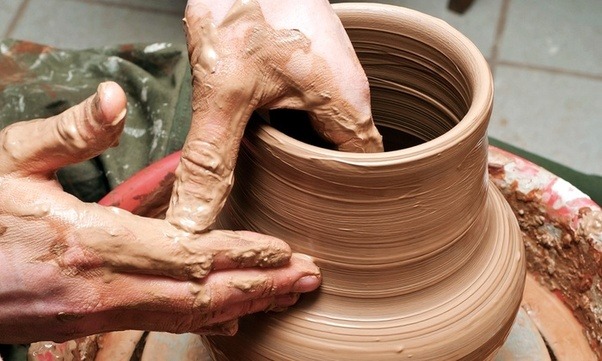Archaeological surveys have shown that the early artwork usually consisted of pottery and ceramic from the antediluvian times and consisted of the most basic painted designs and crudely inscribed etching and inscriptions. As communal cultures evolved, every culture began to unfold their own individual originals which resulted in an impressive array of artistic forms and features produced from clay. Pottery and ceramics are divided into three different types based on the properties of the clay they found within their region of abode into Earthenware, Porcelain and China ceramics.
Earthenware is glazed or unglazed nonvitreous pottery. It is the oldest and easiest type of pottery. It is also the softest and can be scratched with a knife, being heated at the lowest temperature (typically between 1000 and 1200 degrees Celsius). Usually made of selected clay sometimes varied with feldspars and other minerals. Earthenware shows high plasticity which makes them easier to be shaped by RAM press, roller-head or potter’s wheel. High porosity and low mechanical strength make earthenware less used for intense use. Though methods like glazing to make it watertight and thicker cross-section are practiced, it can be easily chipped off. Terracotta earthenware consisting of high iron oxide contents, cyclically orange or red is used for flower pots, tiles and some decorative and ovenware.
The basic content formula for the production of earthenware consists of 25% kaolin, 25% ball clay, 35% quartz and 15% feldspar. The firing time will be determined by the raw materials used and the wanted characteristics of the finished ware and is done in factories and modern studio potteries. The firing temperature usually affects the color of the body. Lower temperatures produce a typical red terracotta color and the higher temperatures might make the clay brown or even black. Extreme temperatures might cause the earthenware to bloat.
Earthenware has a huge history and a huge number of types dating from the past and from different parts of the world. Hispano-Moreque ware from the ancient Greek painted mailocia of the Italian Renaissance, Dutch Delftware which imitated porcelain and the extremely rare Saint-Porchaire ware made for the French court are the notable ones. Staffordshire pottery from England, sancai glazed wares which were lead-glazed earthenware from China were used to make large sculptures and figurines. Terracotta, Redware, Victorian Majolica, Lusterware, Raku, Ironstone China and Yellowware are other famous types of earthenware. Earthenware might not be used to cook food or store items like ancient times but it has been successful in remaining as an avenue of artistic expression in the 21st century.



